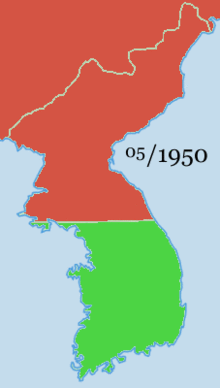Increased US drone use ‘may create slippery slope to wider war’, report says
Spencer Ackerman, The Guardian
Thursday 26 June 2014 14.15 EDT
Rather than the typical drone critics, the skepticism over what the Obama administration calls “targeted killing” – usually accomplished through drone strikes – comes from, among others, a former US military commander for the Middle East; a former commander of the Afghanistan war; a former FBI and CIA senior officer; and two senior Pentagon policy officials from Obama’s first term, when drone strikes became the signature US counterterrorism weapon.
…
“The increasing use of lethal UAVs may create a slippery slope leading to continual or wider war,” the report warns, lending official recognition to a point made for years by leftwing critics of Obama’s drone attacks.
…
Echoing a criticism from United Nations drone investigator Ben Emmerson, the report finds that “despite the undoubted good faith of US decision-makers, it would be difficult to conclude that US targeted strikes are consistent with core rule of law norms.”
…
(T)he Stimson report acknowledges that even in cases where only “terrorists” are killed, the strikes “can cause great resentment, particularly in contexts in which terrorist recruiting efforts rely on tribal loyalties or on an economically desperate population.”
US cited controversial law in decision to kill American citizen by drone
Spencer Ackerman, The Guardian
Monday 23 June 2014 13.48 EDT
“We believe that the AUMF’s authority to use lethal force abroad also may apply in appropriate circumstances to a United States citizen who is part of the forces of an enemy authorization within the scope of the force authorization,” reads the Justice Department memorandum, written for attorney general Eric Holder on 16 July 2010 and ostensibly intended strictly for Awlaki’s case.
Among those circumstances: “Where high-level government officials have determined that a capture operation is infeasible and that the targeted person is part of a dangerous enemy force and is engaged in activities that pose a continued and imminent threat to US persons or interests.”
…
While Obama administration officials have for years insisted that Awlaki was an operational leader of al-Qaida in the Arabian Peninsula, which in 2009 and 2010 attempted unsuccessfully to detonate bombs inside the US, they have also fought lawsuits seeking to reveal their case against Awlaki.But for the case against Awlaki, hinted at in a Justice Department “white paper” summarizing it that leaked last year, the administration leaned significantly on the broad leeway for counter-terrorism the AUMF established.
“Just as the AUMF authorizes the military detention of a US citizen captured abroad who is part of an armed force within the scope of the AUMF, it also authorizes the use of ‘necessary and appropriate’ lethal force against a US citizen who has joined such an armed force,” reads the memo, written by former Justice Department lawyer David Barron, who also analyzed and rejected arguments that killing Awlaki would be tantamount to murder.
…
The release of the memo, as ordered Monday by a federal appeals court, ended a legal battle that has stretched for years, intended to prevent the administration from killing Awlaki or any other US citizen without trial. After losing an April appeal and confronting a challenge by Republican senator Rand Paul to deny Barron a federal judgeship, the Obama administration agreed not to fight the document’s disclosure.
…
In the disclosed portions, Barron’s memo does not explicitly vouch for the government’s case against Awlaki, referring instead to “the facts represented to us”. It refers instead to Awlaki as a “leader” who was “continuously planning attacks” against the US, without providing an evidentiary basis for claims central to the extraordinary circumvention of normal due process procedures. Nor do the public sections explain why capturing Awlaki was not feasible, nor why the Justice Department believes it need not have provided Awlaki with judicial process.
…
Rejecting a government argument that the release of the memorandum would chill attorney-client communications, the court wrote on Monday: “If this contention were upheld, waiver of privileges protecting legal advice would never occur. … We need not fear that OLC will lack for clients.”Several of the government’s appeals for secrecy have been overtaken by the public record, the court found. Among them: the “identity of the country in which al-Awlaki was killed”, which was reported as being Yemen on the day of the lethal strike; and the involvement of the CIA, which in addition to being an open secret for years was confirmed by former director Leon Panetta.
“We recognize that in some circumstances the very fact that legal analysis was given concerning a planned operation would risk disclosure of the likelihood of that operation, but that is not the situation here where drone strikes and targeted killings have been publicly acknowledged at the highest levels of the Government,” the court explained.
The ACLU, which sought along with the New York Times to compel the release of the memo, vowed to fight the government’s additional arguments for secrecy around other legal foundations of what it calls its “targeted killing” program.





